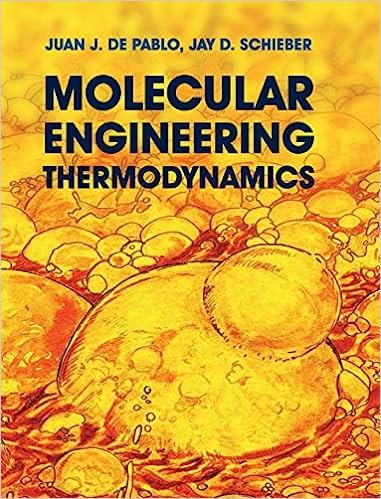Answered step by step
Verified Expert Solution
Question
1 Approved Answer
NT-1 Given: 7.70x10 -5 g of acetic acid (CH 3 COOH or, HAc) are placed in a beaker. Pure water is added until solution volume
NT-1 Given: 7.70x10-5 g of acetic acid (CH3COOH or, HAc) are placed in a beaker. Pure water is added until solution volume is 8.00 liters. Temperature is 50 C. Calculate the following quantities to a precision level of three significant figures. Hint: This is a weak acid at a low concentration; therefore, do not assume that the proton concentration is equal to the acid total concentration (because it is not). Find:
- Precise pH of the solution. Ignore temperature corrections for this part of the problem, but add the following note to your solution temperature corrections to dissociation constant values have not been made.
- Molar concentration of dissociated acetate (acetate ion) in solution (mol Ac-/L)
- Mass concentration of dissociated acetate (acetate ion) in solution in micrograms per liter (ug Ac-/L) where Ac = CH3COO-
- Mass fraction of dissociated acetate ion in the solution (g Ac-/g Solution)
- Parts per billion dissociated acetate ion by mass (ppbm Ac). Is it the same number as for ug/L mass concentration? Why?
- Normal concentration of the acid, HAc (eq H+/L)
- Mass concentration of the acid, HAc as CaCO3 (mg HAc /L as CaCO3)
HINT: Because HAc is a weak acid (pK > 2) only a portion of the protons will dissociate from Ac. To start,
- a) Calculate [H+] from the monoprotic acid eqn. in the CE 142 Acid-Base lecture.; b) Calculate pH.
- Use [H+] to calculate a1 (Eqn: 4-47 in your book), the fraction of total acid that dissociated.
- Molar conc. of Ac-, [Ac-] = a1AT where AT is the molar conc. of total acid in solution.
Step by Step Solution
There are 3 Steps involved in it
Step: 1

Get Instant Access to Expert-Tailored Solutions
See step-by-step solutions with expert insights and AI powered tools for academic success
Step: 2

Step: 3

Ace Your Homework with AI
Get the answers you need in no time with our AI-driven, step-by-step assistance
Get Started


